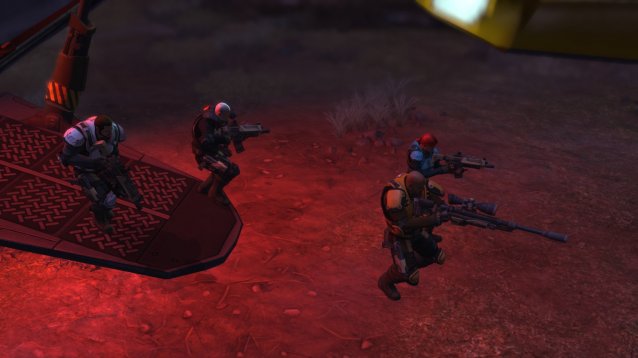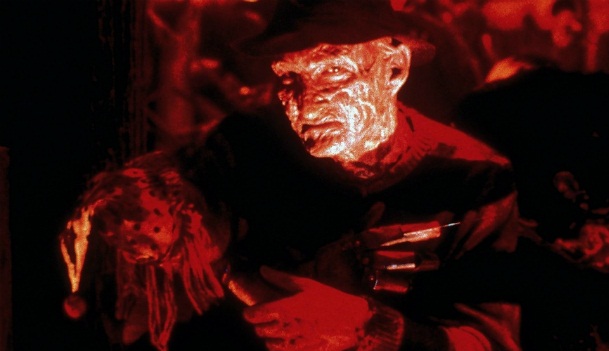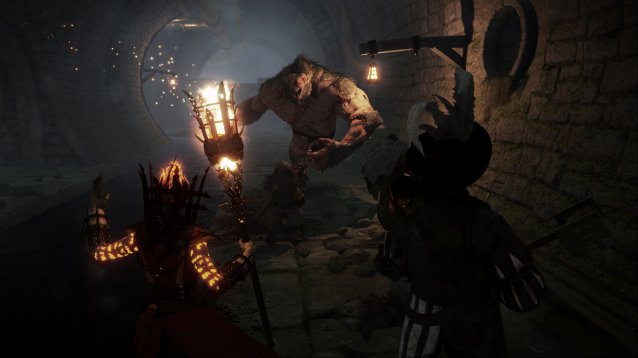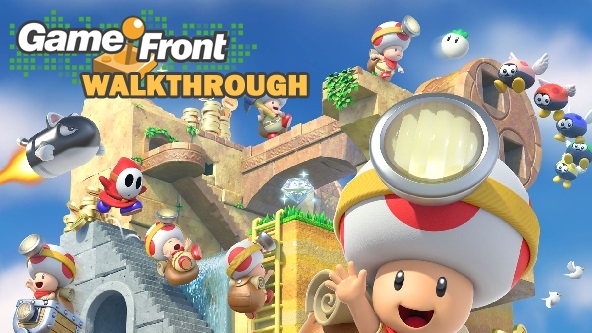


Here’s the tutorial mission in XCOM: you drop into an area with some kind of alien contact, the vanguard of an alien invasion of Earth. Your squad of four moves into a warehouse. Every move in the tutorial is given to you—it’s explaining the squad command interface and turn-based tactical mechanics first, before letting you control your tactics and overall strategy. It’s not a clean mission. Three of your four squad members die. One survives.
This isn’t just a tutorial in how to play XCOM: Enemy Unknown. It’s a tutorial in how to think about XCOM. Your soldiers? They’re gonna die. And you still might win. And you still might have a blast. But you’re going to have to get used to losing the men and women that you controlled, developed, equipped, and perhaps even named and customized.
Your characters die. That’s part of what makes XCOM great.

When I was a child, one of my oddest habits was to have what I called “Color Races.”I would take a batch of colored pencils, and put them in a row. I’d then look away, and pinch them between my thumb and fingers, so they’d roll up and come out in a different order. After I did this three times, I’d look, and note which pencil was closest to me. It won the race; I’d take it and make a mark with that color. After doing this for a while, whichever color had the most marks was the champion.
Unsure of exactly why I ran these Color Races, I’ve developed a few theories. Certainly, I was a weird kid. But I’ve thought that the weirdness manifested in this way because I was interested in narrative and competition. What were the patterns that work there? It’s largely random, yes, but how much did being at the “front” of the batch matter? The term “races” matters here—I was, essentially, constructing a sporting season. It’s a narrative of competition, it’s seeing who wins, who survives, what they have in common.

When you get soldiers in XCOM, you can change their name, their skin color, their hair-style and color, their voice, their face, their armor style and color. Then, once you send them into missions, you customize their gear, and get one of four different classes (Assault, Heavy, Sniper, Support) assigned to them. As they gain experience, they go up in rank, and can further customize within their class. For example, you build a Support class to operate as an elite medic, moving faster and healing better than anyone else. Or you can have a sedentary Sniper, who can see and shoot from virtually anywhere on the battlefield, finishing off several enemies in a single turn. After your troops gain a few levels, they even get nicknames.
So you can invest a lot of time and energy into your squad. And then they die. You can spend 10 minutes customizing a character, and then on her first mission, a lucky shot from an alien Thin Man kills her within two minutes. You can build an elite Assault unit, who tears around the battlefield, flushing enemies from cover and racking up kills, but they can run into two Muton Berserkers and never stand a chance. They’ll die. Of course, you can reload, but as the tutorial indicated, this is a game where death happens.
I’ve seen several people name their troops after people they know, or other game reviewers. Then those people die, and it’s awkward. Me, I decided to name my characters after Game Of Thrones characters, since they had both a variety of different looks and colors, and a high enough mortality rate that I could laugh at their deaths. It had an internal narrative: “I can’t believe these two characters who died at the same time in the books died in the same mission!” It was the Color Races all over again—death in XCOM comes often, death comes nearly-randomly, and it doesn’t make sense. But attaching those character names gives some kind of order. This gives the death meaning, instead of instantly demanding a reloaded game. The death is fun. Five customized soldiers go on a mission, three come back. I note which ones survive. They’re winning the Color Races. At least, until a newer, stronger form of enemy comes along. Then the bodies start piling up again.

But it wouldn’t work without the colors, without the customization. In the original X-COM, the only differentiation between your squaddies was their gender, as depicted through either spiky hair or pony-tails, and what kind of armor they were wearing. But giving the option to switch between cosmetic armor coverings, and the different color options, now the squad members have personality. They have a bright, shiny, diverse personality, with pink and blue and black and white and yellow and teal and orange and brown and red, and everything available. It looks good. More importantly, it looks right. It looks like a wide group of squaddies who you want to give a personality too should look, in order to fix the biggest (and perhaps only) weakness of the original game.
Thus XCOM has made me realize that my old fascination with Color Races wasn’t about the races. It was also about the colors. Color is important. Essential, even.
This isn’t just about having 32 color combinations, though. It’s more an overall feeling, that XCOM gets everything right. It’s the interface, the map layouts, the tense missions where you fight up a highway filled with abandon, potentially explosive cars in the pouring rain, or trying to sneak up to landed UFO in an idyllic forest. It’s watching a slow-motion reaction sniper shot against an flying alien Floater connect and sent it spinning across the map. (It’s not, however, a graphical glitch that makes 2nd-story movement difficult at time—but I’m told “graphical glitches” will be fixed for the release version.) It’s the sound and music. XCOM gets “it”—being itself—right.

Encouraging the player to deal with death is the first great thing XCOM does. Having the right amount of personality is the second. The third? Its barrage of choices.
Firaxis founder and legendary game designer Sid Meier has a theory that a game is “a series of interesting choices.” It’s a limited definition that doesn’t include reaction-based rhythm games, to name one set, but it is a good theory for understanding what makes a good game, especially a strategic one. Given that XCOM is from his company, it makes sense that it follows that model. But the important thing is that XCOM follows it incredibly well.
At every level of the game, you’re forced to make a choice and gamble that it’ll work or not. Every shot you take in the tactical combat has a percentage you’ll make it attached. Do you think you’ll make that 75% sniper shot? Are you willing to bet one of your characters’ lives on it? With one shot left in the rifle and a clear screen, do you reload and take your chances, or maintain vigilance and get an opportunity shot in if an enemy shows up? Make a big move or a small one?
Get outside of the mission, and the choices are even tougher. In the strategic mode, you build your base and capabilities for fighting the escalating alien invasion. This involves doing research, investing in upgrades to your squad’s items, your fighter jets, your revenue stream, and your base facilities. On Normal mode, you’ll have to choose a few different things and ignore a few others. On the more difficult Classic level, most of the time, you’ll have to scrounge for one or two improvements at a time, because you’re hiring new soldiers to replace heavy casualties.
There are times when these choices are arbitrary. Sometimes this works—each promotion your characters get involves choosing between one of two different perks. For example, the Heavy weapons class gets its first choice between the ability to fire twice in a round, or the ability to improve the aim of other squad members attacking the same target—make the character more self-sufficient, or more useful to others. Both are viable. On the other hand, every so often, you’ll have to choose between different abduction missions in three cities. Success in one gets you a bonus and improves that continent’s perception of you, but increases “panic” in other countries—which is initially frustrating because there’s no particular reason your XCOM organization can’t have a second transport plane. But play long enough, and the abduction choices become comprehensible as a method for forcing the player to make more difficult choices on a timeline—they start to give the invasion a soft time limit, increasing desperation.
There is an occasional perception that old games have archaic design, that video games are constantly improving, becoming greater. The combination of 1994’s original X-COM from 1994 with 2012’s new XCOM: Enemy Unknown demonstrate how superficial such thinking is. Four generations of video games over those years, and great design is still great design. Interface tweaks can help, graphics can be technically improved, increased space can allow more diversity in presentation, sure. But. The original X-COM was one of the greatest games of all time. Its 2012 reboot builds on that legacy.
XCOM: 5 stars of 5
Color Races: 2 stars of 5




 Pitty to voice Mortal Kombat X character Cassie Cage
Pitty to voice Mortal Kombat X character Cassie Cage Dismantling Womens Bodies
Dismantling Womens Bodies How to find all balloons in Batman Arkham Knight: A Matter of Family DLC
How to find all balloons in Batman Arkham Knight: A Matter of Family DLC Captain Toad: Treasure Tracker Walkthrough
Captain Toad: Treasure Tracker Walkthrough PAX Prime 2013: Pokemon X and Y Impressions
PAX Prime 2013: Pokemon X and Y Impressions